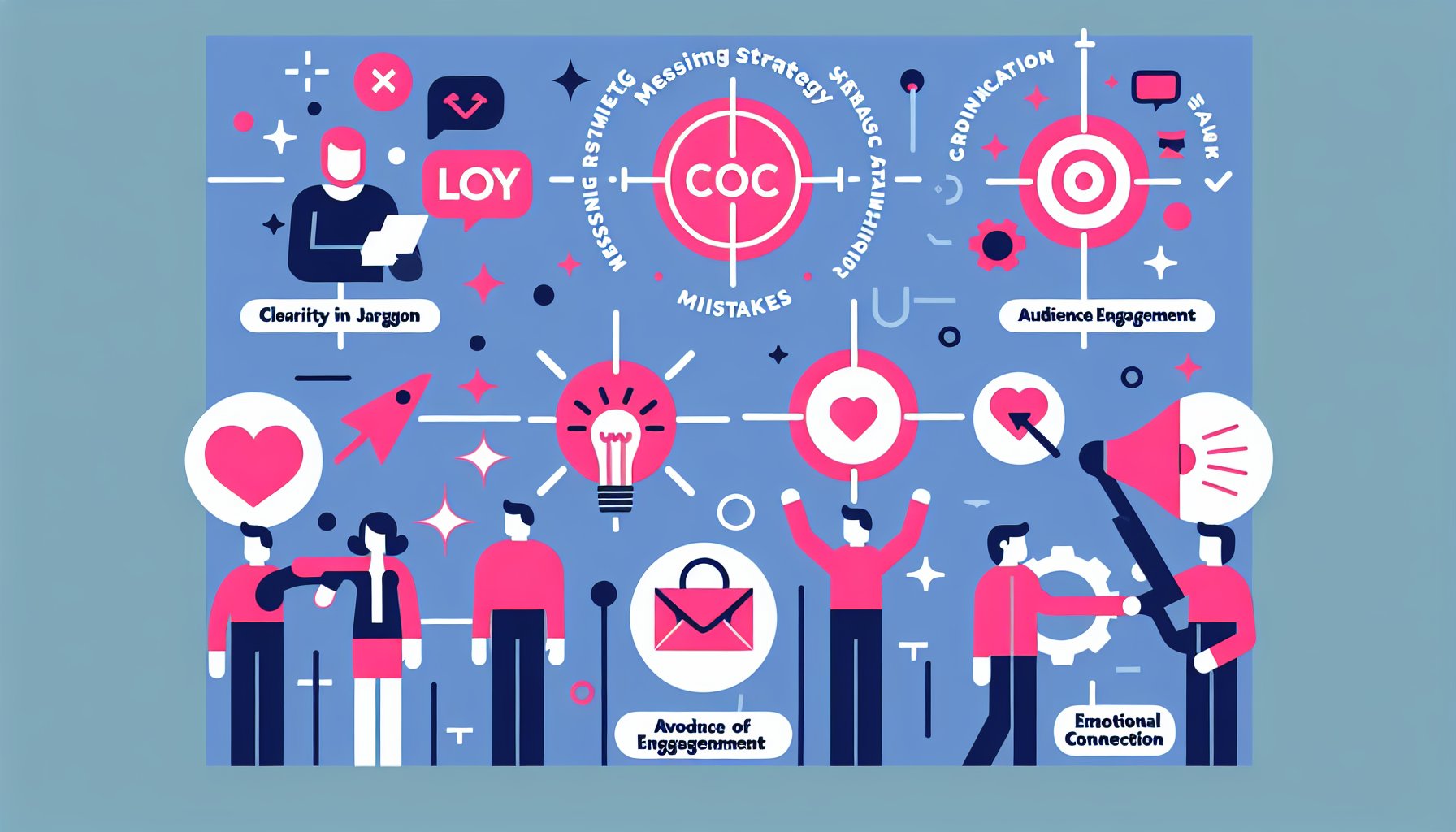Messaging Strategy
Top 10 Common Questions About Messaging Strategy Answered
Discover the answers to the Top 10 Common Questions About Messaging Strategy Answered. Learn how to craft compelling messages, adapt to change, and engage your audience effectively. Elevate your communication game today!
Oct 26, 2025
6 min read

Top 10 Common Questions About Messaging Strategy Answered
In a world where the only thing constant is change, nailing your messaging strategy is like having a GPS in a tsunami, essential. Whether you’re smoothing the waters during a merger, launching a new product, or just trying to keep everyone on the same page, getting your message right is crucial. Let's dive into the question pool and fish out some answers.
1. Decoding the Messaging Maze: What Is a Messaging Strategy?
Alright, let's strip down the jargon. A messaging strategy is like the secret sauce of your company’s communication burger. It's how your company translates its complex ideas, values, and goals into words that resonate with your audience: employees, customers, partners, you name it. When you're in the throes of organizational change, like a merger, this strategy is your roadmap. Think of it as translating high-level corporate speak into something your grandma would actually understand over coffee.
For example, imagine a tech company revamping its operations. Without a clear messaging strategy, chaos reigns. But with one? You transform impending doom into a growth opportunity.
And remember, a messaging strategy isn't a stone tablet. It's more like a living document that must evolve as the world does. Keep it fresh, keep it real, and keep it relevant.
2. The Heartbeat of Communication
At the center of effective organizational communication is your messaging strategy, it's the heartbeat, the steady drumbeat that keeps all parts of your organization in rhythm. This is especially true when 78% of businesses are bracing for transformation over the next few years.
During transitions, a robust messaging strategy prevents the rumor mill from churning out anxiety smoothies. When change rolls in, it’s not just about what you say, it’s how you say it, ensuring every team member feels like they're part of something bigger.
Remember, communication is a two-way street. Just like Proforma LBP Marketing Concepts did, create feedback loops that align with employee sentiments. It’s amazing what a little open dialogue can do, trust goes up, morale soars, and suddenly, everyone’s rowing in the same direction.
3. The Art of Listening: Identifying Your Audience
Finding your target audience is less about shouting your message from the rooftops and more about listening closely to whispers. Sure, data and analytics are useful, but tune in to what people really value. A boutique coffee shop in an urban jungle found success by listening at community gatherings rather than assuming what their customers wanted.
Your messaging strategy should mimic a great conversation: one where you do more listening than talking. Social media isn't just for broadcasting; it's a listening post. Engage in conversations, respond sincerely, and let those insights guide your strategy.
4. Creating Clarity
Navigating the murky waters of business communication without clarity is like trying to drive through fog without headlights. An effective messaging strategy acts as your high beams, guiding you toward success. Start by knowing your audience inside and out, not just their demographics but their hopes, fears, and motivations.
Consistency is key, your message across all platforms should be like a symphony, harmonious and unified. Structure your message to invite dialogue and embrace adaptability as new information comes in. In this ever-changing landscape, clarity isn’t just helpful; it’s essential.
5. Communicating with Purpose: How Do I Develop Compelling Messaging?
Crafting messages that stick is more than just a useful skill, it's a superpower. Start with empathy. Understand your audience's emotions, and tailor your narrative to touch those heartstrings. Clarity and simplicity are your best friends, ditch the jargon and be direct.
Consistency builds trust, so use the same messaging voice across all interactions. This cohesion reassures your team and customers alike that you know where you’re headed, even when the road gets bumpy.
6. Channel Surfing: Which Platforms Should I Use for My Messaging?
Choosing the right platform is like picking the perfect stage for your rock band. B2B businesses might find their groove on LinkedIn, while consumer brands can rock out on Instagram or TikTok. Each platform has its own vibe and culture, treat them as such.
Understand the platform's idiosyncrasies and tweak your messaging accordingly. Remember, a channel that works today might need a shake-up tomorrow, stay flexible and keep analyzing those engagement stats.
7. Feedback Loop: Testing and Measuring Messaging
In your quest to find the perfect pitch, feedback is invaluable. It's like having a GPS that recalibrates each time you miss a turn. Encourage open dialogue and let your audience’s feedback illuminate your path.
Use tools like A/B testing to refine your message. Get comfortable with constant evolution, messaging isn’t a set-it-and-forget-it scenario. It’s an ongoing relationship with your audience.
8. Adapting to Change: What to Do If Your Messaging Isn’t Working?
When your messaging flops, it's not the end of the world. Consider it a wake-up call. Revisit your core message, engage your audience for insights, and be open to change. Storytelling is a powerful vehicle for change. Revamp your narrative to align with feedback and watch as confusion turns into clarity.
9. Future-Proofing Your Messages
To ensure your messaging isn’t a flash in the pan, build resilience into your strategy. Authenticity and adaptability are crucial, your messaging must reflect ongoing dialogue with your audience. Keep up with industry trends and tech advances, and let real-time data inform your adjustments.
Proactively share stories that align with current values, like sustainability or innovation, to foster longevity and trust.
10. Final Thoughts: Crafting Your Unique Messaging Journey
Let’s wrap this up: crafting your messaging strategy is like concocting a signature cocktail, expertly balanced, uniquely you, and leaving a lasting impression. Learn from the big dogs like Apple and Nike: their success lies in consistent, value-driven messaging.
Embrace change, engage openly, and refine constantly. Your messaging doesn’t just narrate your business journey, it shapes it. So, keep it fresh, relatable, and inspired by the world around you. After all, in the story of your brand, compelling messaging is the plot twist that keeps your audience turning pages.
TL;DR
In the fast-paced world of business, a strong messaging strategy is your trusty compass. It’s not just about what you say, but how you listen and adapt. From decoding your strategy’s purpose to future-proofing your message, it’s all about clarity, consistency, and connecting with your audience on a deeper level. Your messages should evolve with the times, staying fresh and relevant in an ever-changing landscape.

Need Help?
Check out these related products that can help:








